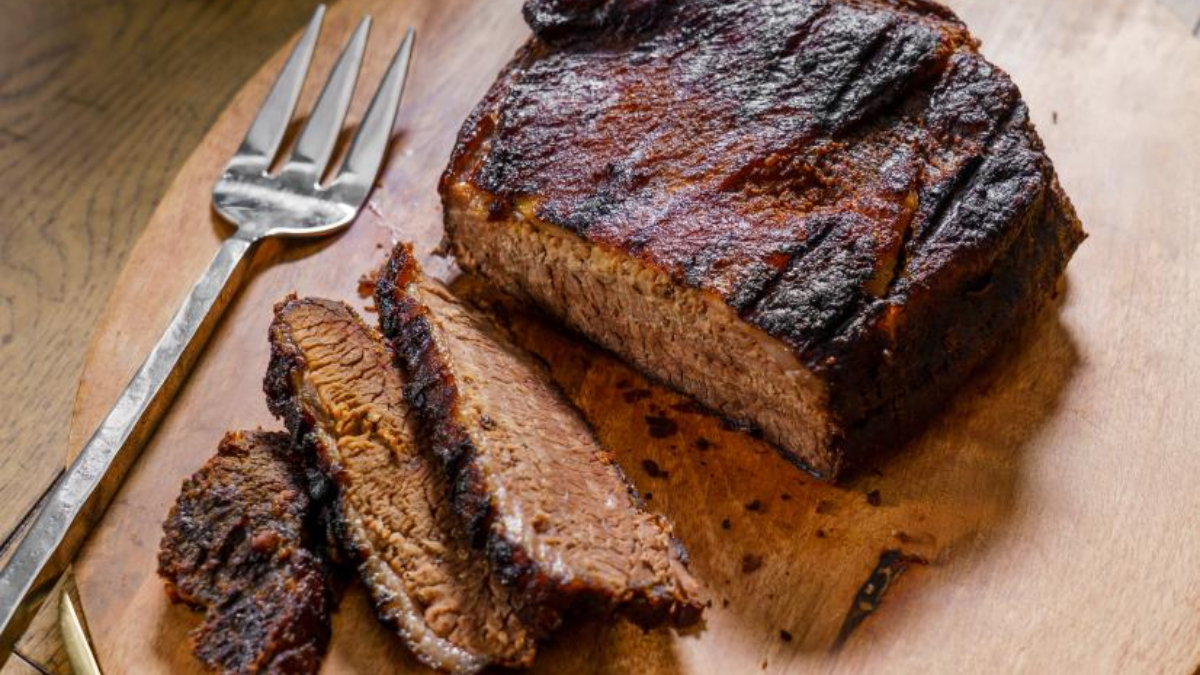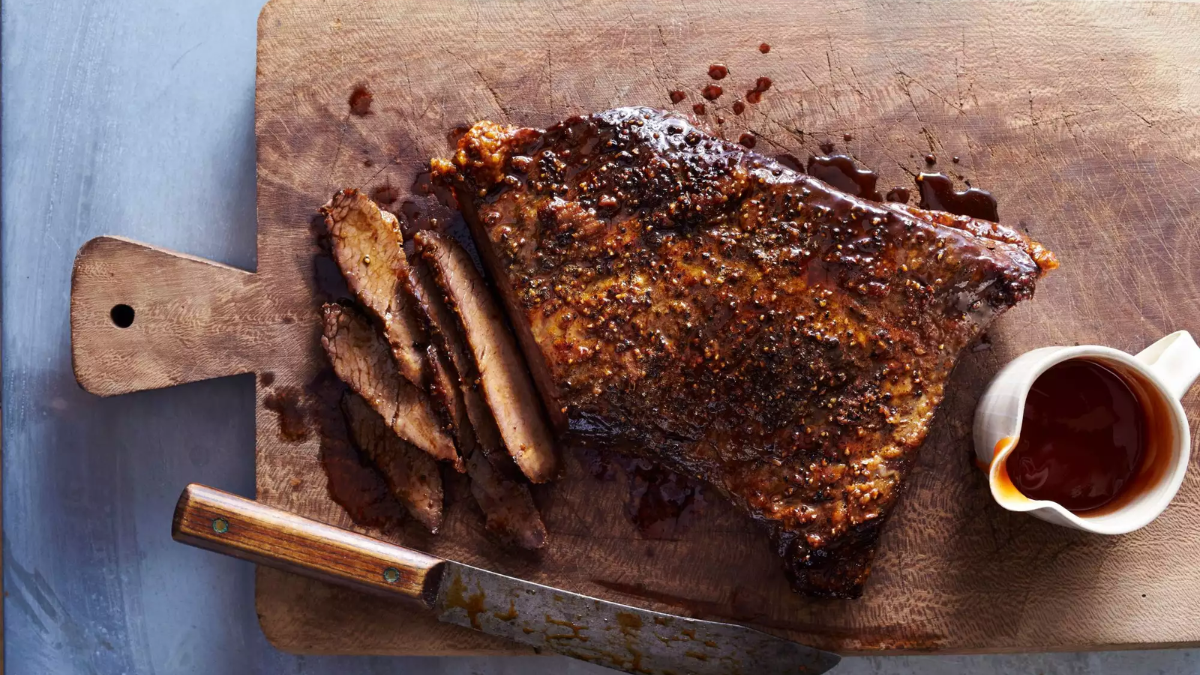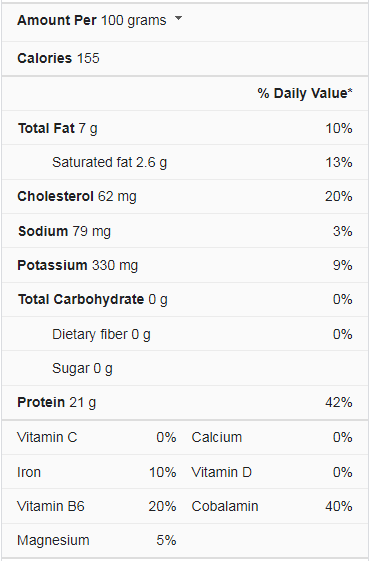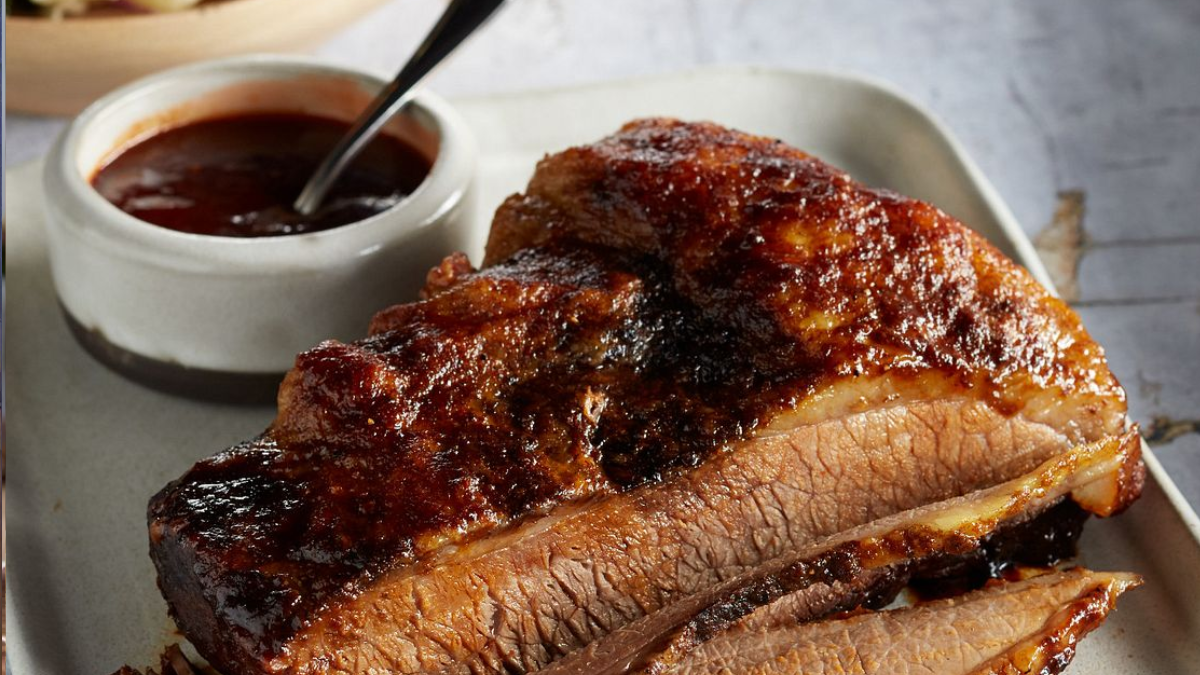Even the toughest piece of meat can be made palatable with a little time and the appropriate cooking technique. One of the least tender pieces of beef is brisket, made from the breast of the cow or the veal. However, it becomes soft and flavorful when it is braised, smoked, or gently roasted. Fresh brisket is a cheap boneless cut that must be cooked for a long time and at a low temperature to break down the collagen in the connective muscle tissues and produce lusciously soft meat.
Whether you order brisket from a restaurant or smoke it at home, there are many reasons to appreciate it. This primal cut, an inexpensive piece of beef that can be rendered soft by low and slow cooking (often, slow smoking that takes many hours), may provide a lot of flavors and feed a crowd. Brisket is made from red meat, which can have a high-fat content, but research suggests it may be healthier than other options.
Brisket Nutrition Facts
What is Exactly Brisket?
Each cow has two whole briskets, one on each side, right above the front shanks and below the chuck. A full brisket is a single cut of beef. The confusion arises when you are in front of the meat case and notice three different-looking slabs of meat that all have the word “beef bri “ket” written “on them. Two separate pieces of flesh combine to form a beef brisket.
The butcher separates the brisket and trims it so you can choose between the slimmer section, frequently referred to as the flat brisket or first cut, and the more marbled piece with the fattest as the brisket point or second cut. The flat brisket is typically made into corned beef or occasionally utilized in pho on Jewish festivals. The traditional cut for barbecue is the point brisket. No matter the brisket you select, it is a tough cut of meat that requires low and slow cooking. Consider an oven, slow cooker, or indirect heat on a grill.
Taste
Brisket generally has a beefiness; how you cook the meat brisket will affect how it tastes. While a braising liquid will give the meat its flavor, bringing and smoking imbue the meat with distinct flavors.
Varieties of Brisket
After the entire piece of brisket has been divided in half, the first and second cuts are given unique names and are marketed separately. The slimmer portion of the beef is the first cut, sometimes referred to as the flat cut, thin cut, or center cut. Due to a little extra fat, the second cut, also known as the point cut or deckle, offers greater flavor.
The initial cut will slice up more neatly and is more appealing. Corned beef it’s a fantastic option. Jewish grandmothers love the second cut because the fatty cap makes a hearty and comforting stew as the meat braises. Deckles are also popular among pitmasters because of how juicy and tender they are when smoked and when they can be easily shredded.
What are the Cuts of Briskets?
There are three cuts of briskets:
Full Packer
This is the full brisket cut, comprised of the two different muscles joined: the Flat and the Point, separated by a layer of fat. It weighs between 8 and 20 pounds. A layer of fat covers the top; this fat cap can be cut to ¼ to 1 inch.
The Flat
The bulk of the brisket is here. The deep pectoral, sometimes referred to as the initial or flat cut, is located against the ribs inside the cow. It is lean or low in fat content because it is worked the hardest. Pastrami and corned beef are two common uses.
The Point
The superficial pectoral is the lowest part that hangs “outside” bove t “e leg. Also known as the triangle cut, the second cut, or the fat end. Beef burned ends are often made using it.
How to Pick a Brisket?
There are several factors to consider when purchasing a brisket for your next cook.
- Look for USDA Prime Grade Brisket, USDA Choice Grade Brisket, or a USDA Select Grade Brisket. There are grades lower than select, but these are lower in quality and come from older animals, and I recommend spending the extra money and getting Prime Grade.
- Each grade is broken up into upper, middle, and lower grades. Higher grades have the most marbling and fat, and higher temperatures and longer cook times would dry out meats with lower amounts of fat.
- Wagyu brisket comes from a Japanese cattle breed and is remarkably based on its extreme fat marbling and tenderness. In 1975, Wagyu cattle were brought to the United States, and over the years, production of these cows has increased. This would be the greatest quality brisket that you can buy today.
- Whole briskets weigh up to 20 pounds. Ensure your brisket can fit on your grill or cooking equipment. A 12-pound brisket typically fits an average size smoker/grill.
- Avoid flat cuts that taper off to a very thin edge. Even the thickness of the piece leads to more even cooking.
How to Season and Trim a Brisket?
Many pitmasters only use salt and pepper to season the brisket. By making this decision, you are letting the natural flavor of the meat and the flavor of the natural wood smoke take center stage.
But feel free to add other tastes if you want to broaden your brisket eating experience. Any rub suitable for beef can be used to season brisket. Paprika, garlic, and peppers are common ingredients in beef rubs, and they stand up well to the robust flavors of beef. An excellent option is our Traeger Beef Rub.
If you decide to use a flavored rub, apply it 12 to 24 hours beforehand to give it time to set. A fat cap is a coating of fat that covers a portion of the meat in briskets. Typically, the fat is removed before cooking.
Ask the butcher to trim the brisket if you’re puyou’reng from them. They should have a good notion of the best method to trim if you let them know how you intend to prepare it.
When trimming on your own, removing some fat without going overboard is important. Your brisket will prevent drying out as it cooks if it has a thin layer of fat on the outside. However, if you have too much fat, it won’t renown the town and the meat won’t devwon’tthat tasty bark. Although some chefs prefer more fat and others less, a 1/4-inch coating is a nice quantity.
How to Cook Brisket?
A quality brisket can be readily pulled apart and is tender and juicy. Cook your brisket low and slow—that is, with low or indirect heat for an extended period—using any of the following cooking techniques to get these results with a tough cut of meat:
- Braising method: Choose a flat-cut brisket for this slow and moist cooking method. To braise, brown the meat on high heat on the stovetop, transfer it to a large pot containing a liquid, such as broth, wine, or canned tomatoes, and cook the brisket for three to four hours. The meat will be soft and tender after you slice the brisket. It’s typiIt’sto shred braised meat from the brisket after it finishes cooking, and you can use the shredded meat to make sandwiches like pulled barbecue.
- Slow cooking method: Similar to braising, cooking brisket in a slow cooker tenderizes the meat. Unlike traditional braising, you can program a slow cooker or similar appliance to do most of the work. When you’re slyou’reking a brisket, brown the meat first, then place it, fat side up, in the slow cooker. Pour liquid or a marinade—such as a barbecue sauce, wine, tomatoes, stock, or Worcestershire sauce—into the slow cooker and season the meat with salt, pepper, and brown sugar. Cook on the lowest temperature setting according to your slow cooker’s cooker’sns.
- Smoking method: Before placing the brisket in the grill or smoker to make smoke brisket, apply a spice rub. Then let the piece of meat cook at a low temperature over a long period. This cooking method gently renders the fat, creating a juicy and tender smoked brisket. Traditionally, Texas-style brisket is smoked full brisket, sometimes called the untrimmed or packer brisket. The term “Texas-st” l e” refers “o both the cut of meat and the cooking style.
Where to Buy Beef Brisket?
If you can’t find brisket in size, you need it in the supermarket store’s meat section, and it could be worth asking the butcher. It would be best if you got a brisket larger than you would assume because they will shrink considerably when cooked.
When buying raw meat, you should buy 1/2 pound for each person but should budget around 1/3 pound for each cooked portion; remember that the fat cap on a second cut will contribute to some of the weight.
Because butchers have discovered that various tough meats rich in fat provide for cuts that are just as excellent as deckle when braised, keep in mind that a “chuck de “kle” is not “usually the same as a second cut brisket.
Storage Tip
When wrapped tightly in plastic, a raw brisket can be frozen for six to twelve months and kept in the refrigerator for five to eight days. The meat may need to be kept in the refrigerator until you’re served because brisket is the kind of dish you frequently prepare (especially when braising, to give the gravy fat time to separate). When properly wrapped, the brisket can be kept with or without the gravy for up to four days in the refrigerator and two months in the freezer.
Conclusion
Brisket may be transformed from the roughest muscle to a flavorful, gratifying piece of meat with the proper cut, cooking time, and cooking technique. The main cut used in barbecue, corned beef, and Jewish pot roast is brisket. But it’s also its primary component of other traditional recipes, such as Italian bollito misto and Romanian pastrami.
Additionally, a 3-ounce serving of brisket has 28 grams of protein, making it an excellent source of this macronutrient. It contains oleic acid, a fatty acid that is helpful for the heart and is a good source of selenium, zinc, iron, phosphorus, and B vitamins. Pastrami, corned beef, pot roast, and smoked brisket are just a few variations that may be found on menus and at backyard barbecues across the nation.



